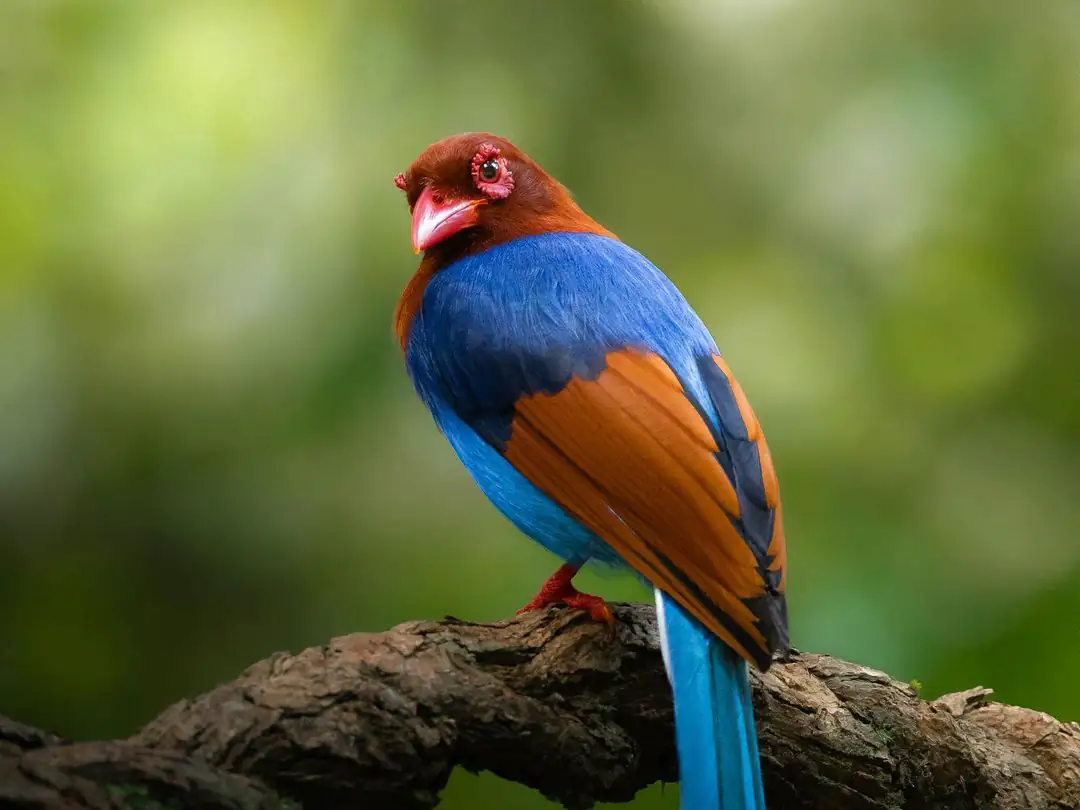If you’re a nature lover or simply curious about birds, you’ve got to visit Negombo. This town on Sri Lanka’s west coast is more than just its beaches and historical charm. It’s a prime spot for birdwatching, and it doesn’t get much better than this when you want to see birds in their natural element. Negombo is blessed with wetlands and a lagoon, both of which draw a variety of birds; some live here all year round, and others travel from faraway places.
You’ll find a bit of everything, from graceful herons wading through shallow waters to tiny kingfishers darting across the lagoon. And let’s not forget the bigger birds of prey, like the Brahminy Kites, patrolling the skies. Whether you’re an avid birder or just looking for a peaceful day out in nature, Negombo gives you a front-row seat to witness this thriving ecosystem in action.
Key Birdwatching Spots in Negombo

Birdwatching at Muthurajawela Marsh
Negombo is a paradise for birdwatchers, and it’s bursting with life. The best spots for birdwatching here are the Muthurajawela Marsh and the Negombo Bird Sanctuary. These places are not just about watching birds from afar but truly experiencing them in their natural habitats.
Muthurajawela Marsh
Muthurajawela Marsh is the largest wetland in Sri Lanka, sprawling across a massive 6,230 hectares. It’s easier to get just how vast this area is once you’re gliding through it on a boat safari. The marsh is a birdwatcher’s dream, home to more than 100 species of birds, with all sorts of incredible creatures to spot. From the ever-elegant herons and egrets gently wading in the water to the elusive bitterns, which can be hard to spot, there’s always something interesting flying or stalking through the marsh.
But what makes it really exciting are the birds of prey. Here, you can witness majestic kites circling overhead, scanning for their next meal, or the imposing sea eagles, who rule the skies. Watching these predators in action is a thrill, especially from the peaceful vantage point of a boat safari. These guided boat tours allow you to go quietly through the marshlands, giving you an up-close-and-personal view of the birdlife without disturbing the natural order.
Negombo Bird Sanctuary
Not far from the marsh, you’ll find the Negombo Bird Sanctuary, which offers a different kind of bird watching experience. With over 130 bird species, this sanctuary is a bit more structured, providing both walking trails and boat rides for visitors.
The sanctuary’s species diversity is just as impressive, with birds like Brahminy Kites, their rusty-red feathers unmistakable as they swoop through the sky. You’ll also spot colorful kingfishers darting over the water and towering storks that stand out against the wetland backdrop.
Best Times for Birdwatching in Negombo
Timing is everything when it comes to birdwatching in Negombo. To get the most out of your experience, you’ll want to head out early in the morning, around 7:30 AM, or in the late afternoon, roughly 4:00 PM. These times are perfect because birds are much more active.
When it comes to the best months for birdwatching in Negombo, November to April is the golden window. This is when the weather is just right, generally dry, sunny, and pleasant, without the humidity and rains that can make exploring difficult.
But it’s not just about the weather; during this period, migratory birds from far-flung regions like Siberia, Europe, and the Himalayas make their way to Sri Lanka. The wetlands and lagoon areas become temporary homes to birds you wouldn’t normally see, like sandpipers, terns, and other fascinating waders.
One of the key reasons November to April is so special is the migration season. It’s incredible to think that these birds have flown thousands of kilometers just to stop here in Negombo.
Additionally, the weather conditions during this time couldn’t be more favorable. This period coincides with Negombo’s dry season, so you’re not constantly dodging rain showers.
Another important factor is the abundance of post-monsoon rains. The wetlands are lush and thriving after the rains, which typically run from May to September.
Diversity of Birds in Negombo

Photo by Ravisara Jayamanna
Negombo’s wetlands are a birdwatcher’s paradise, brimming with various bird species. The area’s rich ecosystem supports a fascinating diversity of birds, making each visit feel like a new discovery.
Migratory Birds
Negombo is an important stopover for migratory birds during the winter months. These birds travel thousands of kilometers from as far as Siberia, Europe, and the Himalayas, seeking refuge in Sri Lanka’s warm and welcoming wetlands. You’re likely to spot species like sandpipers and terns as they forage along the shores, especially between November and April.
Water Birds
The wetlands of Negombo are also home to an array of water birds. Species such as cormorants, herons, and egrets are common sights as they wade gracefully through the shallow waters in search of fish. One bird that often stands out is the Purple Heron. The Pied Kingfisher, with its bold black-and-white feathers, is another star of the lagoon.
Birds of Prey
You can often see Brahminy Kites, with their striking chestnut bodies and white heads, circling above the wetlands in search of a meal. In addition to Brahminy Kites, sea eagles and shikras also patrol the skies over Negombo, ready to swoop down and capture unsuspecting prey.
Unique and Notable Species
Among the more unique species found in Negombo, the Sri Lanka Blue Magpie is a stunning sight, though a rare one. This vibrant bird, with its bright blue body and reddish-brown wings, is endemic to Sri Lanka.
Equally striking is the Oriental Darter, sometimes referred to as the Snakebird because of its long, slender neck, which can be seen poking out of the water as it hunts for fish. With such a variety of bird species, Negombo’s wetlands offer a unique and rich bird watching experience.
For birdwatching in Negombo, having the right gear makes all the difference. Binoculars with 8x or 10x magnification are essential to spot distant birds, while a field guide like “A Field Guide to the Birds of Sri Lanka” helps identify species. For photography, a camera with a 200mm or higher telephoto lens is ideal, while a spotting scope offers even greater magnification for serious birders.
Apps like eBird and Merlin Bird ID are great for logging sightings, and a waterproof notebook is handy for notes. For a seamless experience in the wetlands, remember comfortable, earth-toned clothing, insect repellent, sunscreen, and plenty of water.
